Ultimate cushion design
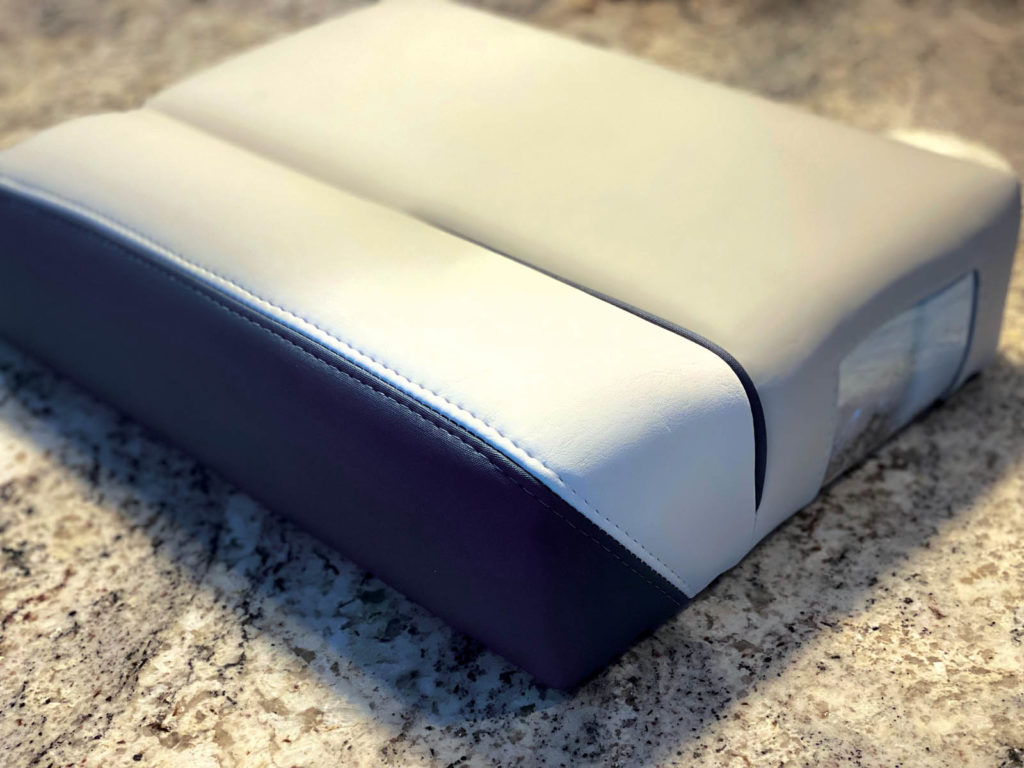
At Interiors by Dawn, the ultimate cushion design—which provides increased drainage and airflow, reduced mold and mildew growth and longevity—is always evolving. This is not for every customer or project; we tailor and customize our cushions to fit each individual project. However, we make sure to discuss these options with customers so they understand what’s available and the differences among them.
Demonstrating the various options in terms of materials, increased drainage, optimum airflow and design is a great way to sell value. Building a sample seat is a simple and excellent tool for helping clients visualize the ultimate seat construction. Ours is 17 inches wide by 12 inches deep, small enough to carry with us. Sample cushions can also be made to demonstrate design trends, colors, textures, specialty inserts and so on. People tend to need visualizations, so it’s worth the time to make these.
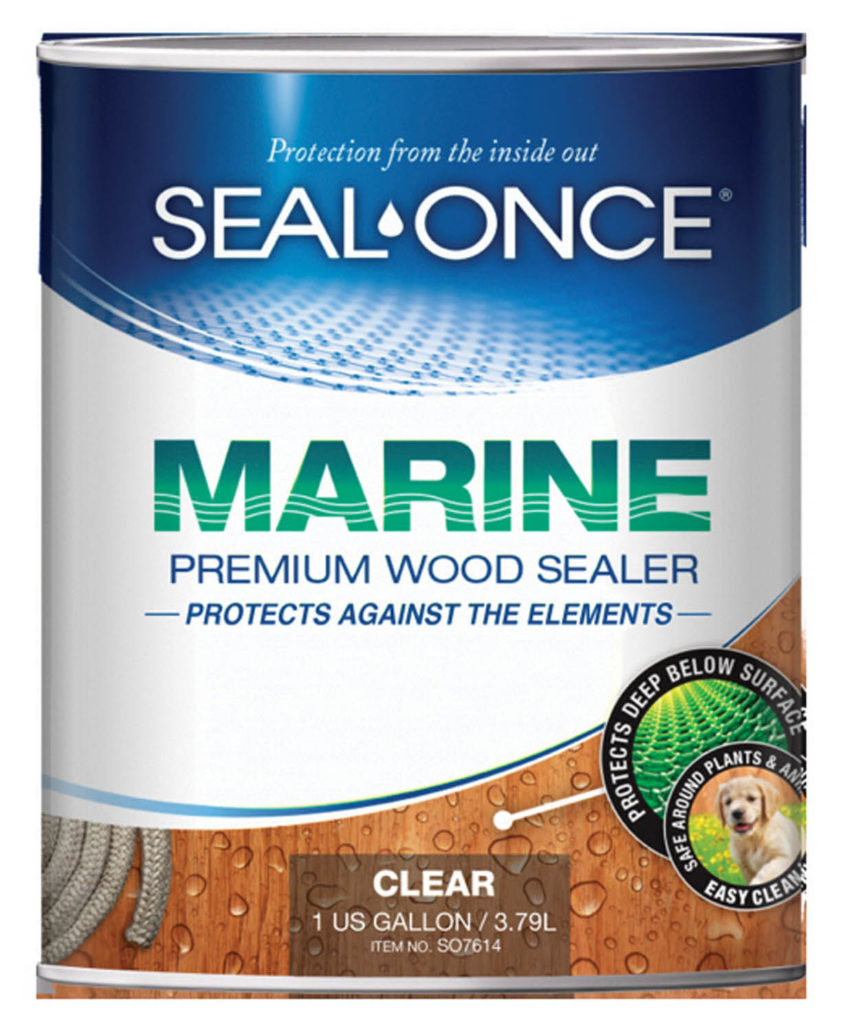
This article discusses how we currently construct our sample seat based on specific environmental conditions in the Northeast, which is surrounded by freshwater lakes and boating is seasonal. You may need a different construction depending on your specific area. When constructing your sample cushion, take into account your specific environmental conditions and how customers use and care for their boats. These will be huge factors in your final design, material selection and recommendations.
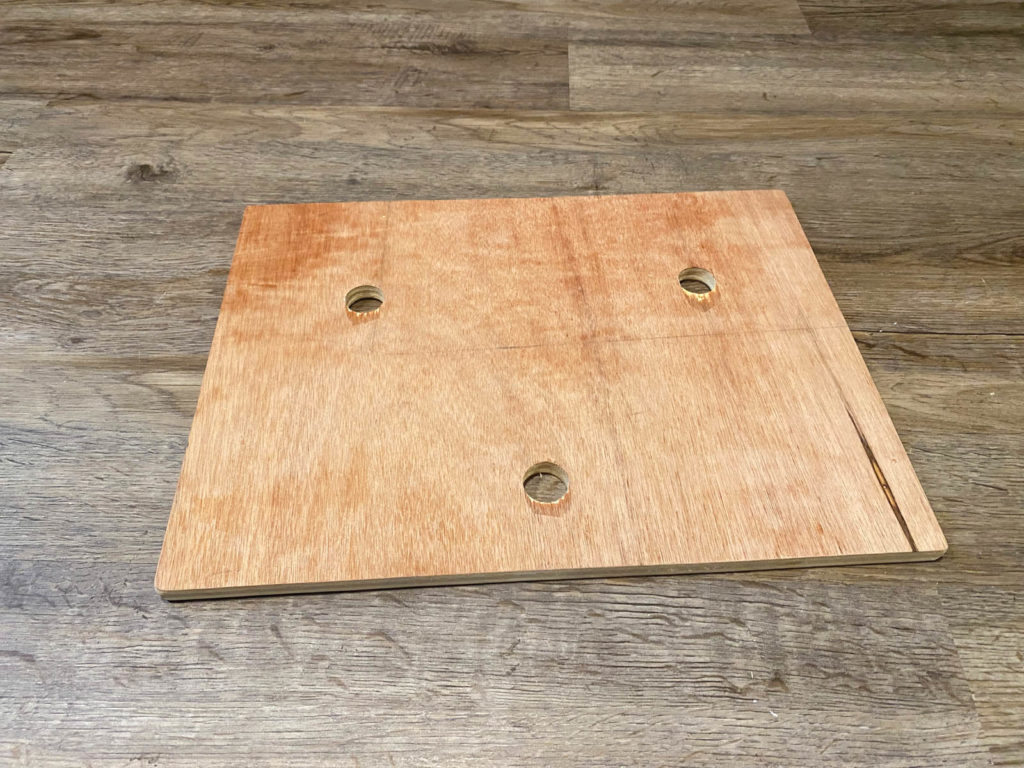
Step 1: The base
We currently offer two base materials: marine fir plywood and marine board. Marine board tends to be a better choice all around, as it does not splinter, absorb water, delaminate or need to be sealed. However, we also regularly use marine fir plywood and always seal it with a premium wood sealer for longer service life and to avoid water absorption (Photo 1).
Regardless of the base material, every project requires several drain holes to allow water to exit and increase the airflow to allow the seat to dry (Photo 2).
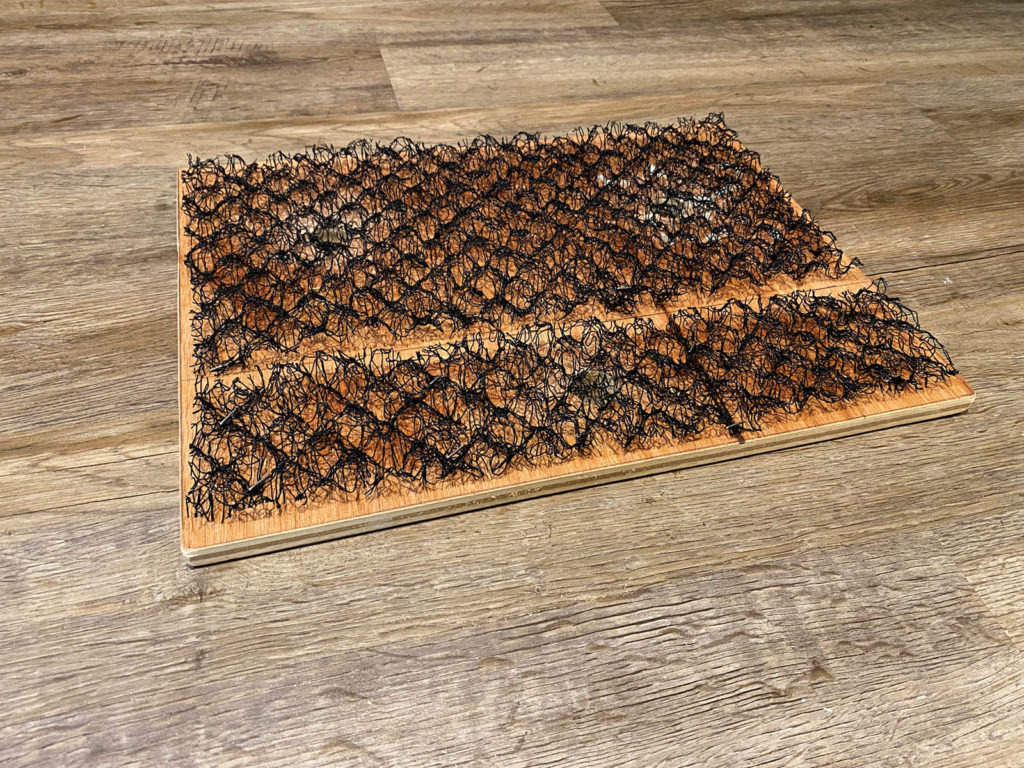
Step 2: Base ventilation
To increase the airflow even more, we add a layer of ventilation mat. This creates an open structure for heat reduction and greatly improves ventilation. The mat helps prolong the life of the construction by reducing the adverse effects associated with moisture and water damage including mold, mildew and deterioration of the seat assembly (Photo 3).
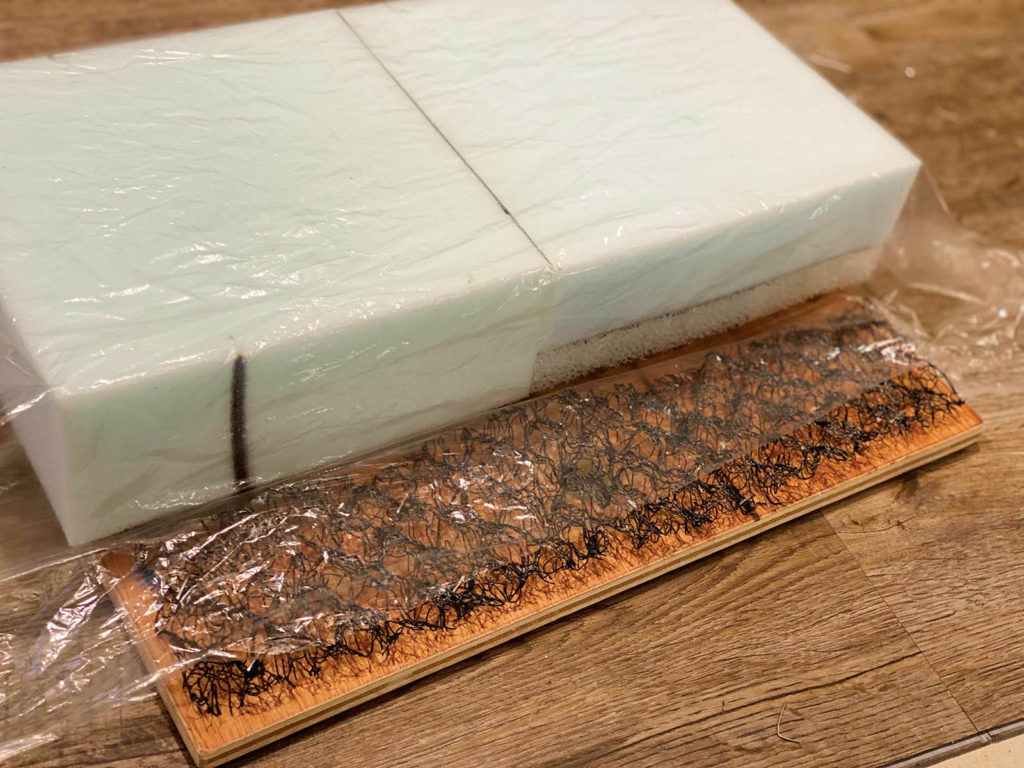
Step 3: Foam
Next, we offer two options for foam construction. Option 1: A thin layer of antimicrobial reticulated foam for increased drainage and breathability followed by a top layer of antimicrobial polyurethane foam. Option 2: A single layer of antimicrobial polyurethane foam (Photo 4). We cover both with a clear seat film for ease of installation and to help create a dirt barrier.
We use extra-firm foam (2670) for cushions and extra-firm or firm foam (2645) for the backrest.
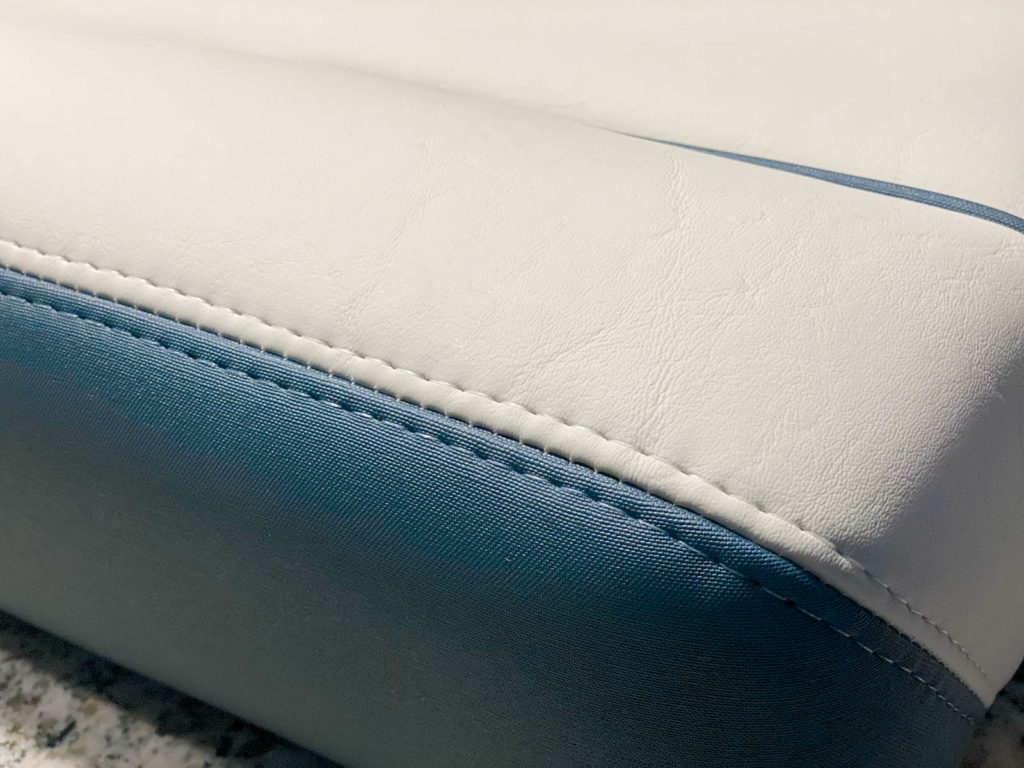
Step 4: Design
Not every project is a redesign, but even so there are always improvements that can be made to complement the original design or create a completely new design tailored to that customer. These include seam placement, thread, material upgrades, textures and foam design.
We use PTFE thread for exterior seams (Photo 5) and polyester thread such as PremoBond or Sunguard for inner seams. When making our inner stretchers, we sew ½-inch plastic marine tack strip (not cardboard, as it absorbs water) for a continuous, even pull (Photo 6). We only use stainless steel fasteners.
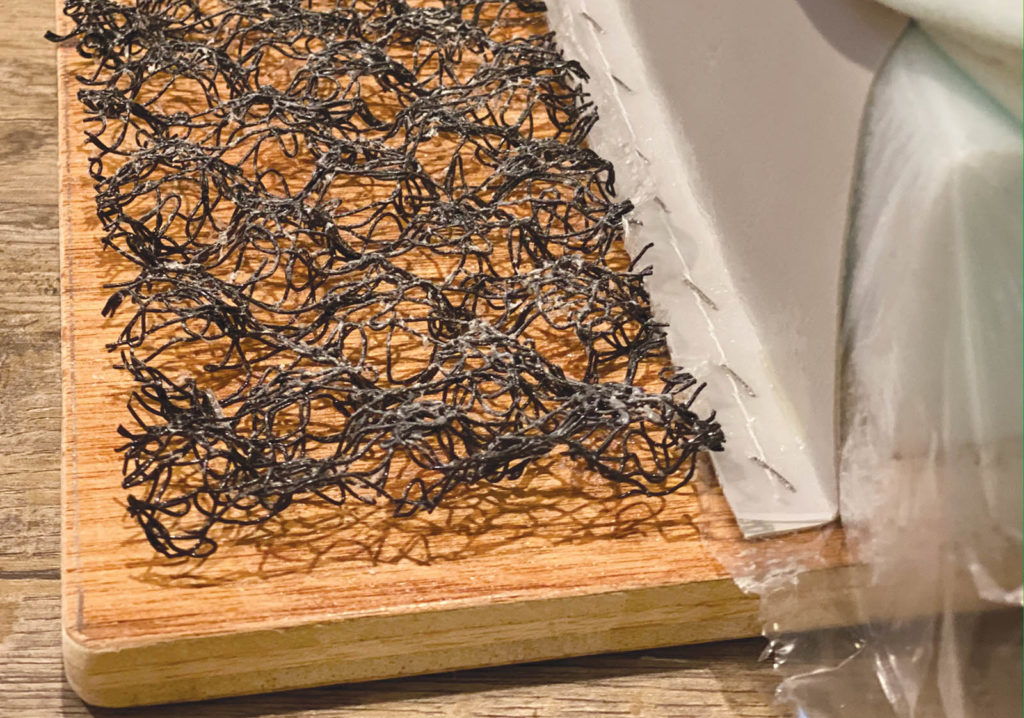
Not all marine vinyls are created equal. Marine-quality vinyl must meet certain standards of abrasion, UV stability and antifungal protection for us to use them. They must be easy for customers to maintain and be aesthetically pleasing. The careful selection of materials is key to a successful design, as shininess, softness, grain type, textures and so on can play a huge role in the appearance of the final product.
All of our vinyl is laminated with an antimicrobial polyolefin foam (sew foam/poly foam typically ¼ inch; see Photo 9). Most importantly, we make sure all products are amine-free to prevent adverse health effects for us and for our clients.
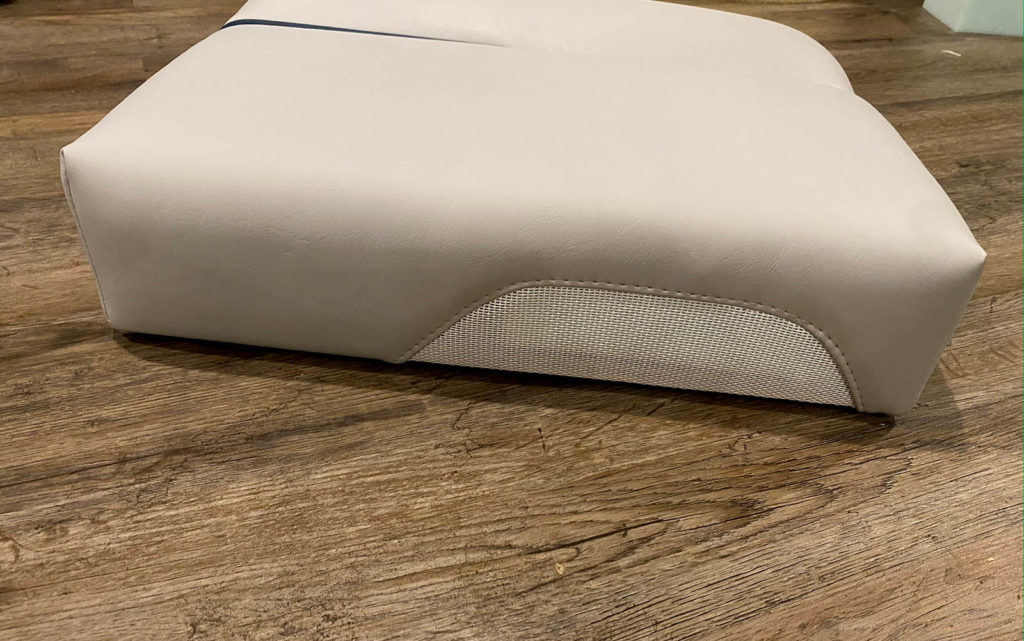
Lastly, we add ventilation to the upholstery to allow another exit point for moisture and increased breathability (Photo 7).
Tip: Seam placement—note where water will run off and pool, and design seams with this in mind. Our preference is not to add too many seams to horizontal surfaces, such as seating cushions, where the most water and debris collect. Specialty inserts and designs are normally kept to vertical surfaces, where water can easily run off and doesn’t collect in seams.
Tip: Documentation—keep notes regarding the types of thread, color(s) and placement; stitch length; top stitch widths; materials; and methods used for each project. These come in handy when customers return for additional work or repairs. We keep our client information in cloud-based storage so it can be accessed from anywhere.
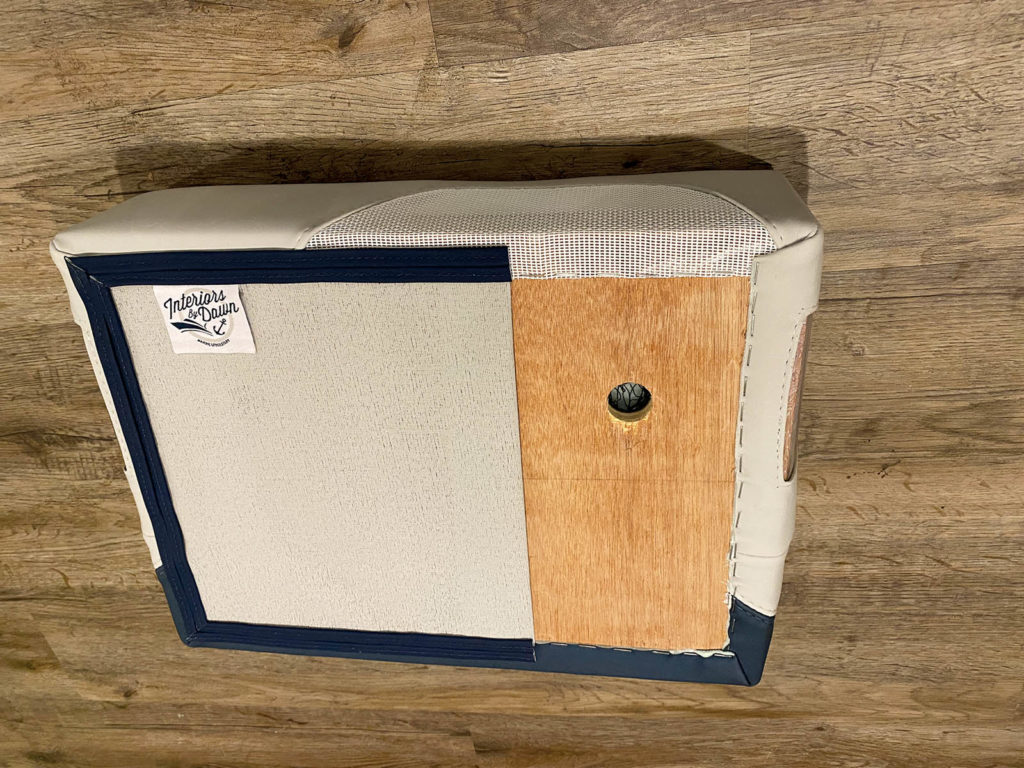
Step 5: Finishing details
We use underlining or mesh on the bottom of the seat primarily as a decorative finish and to cover up raw edges and surfaces. Using porous PVC products is important to aid in airflow and drainage.
We only half-cover the sample cushion base to demonstrate to customers the finished look versus raw (Photo 8). Adding clear windows to both sides of your sample cushion allows customers to see the construction setup options (Photo 9).
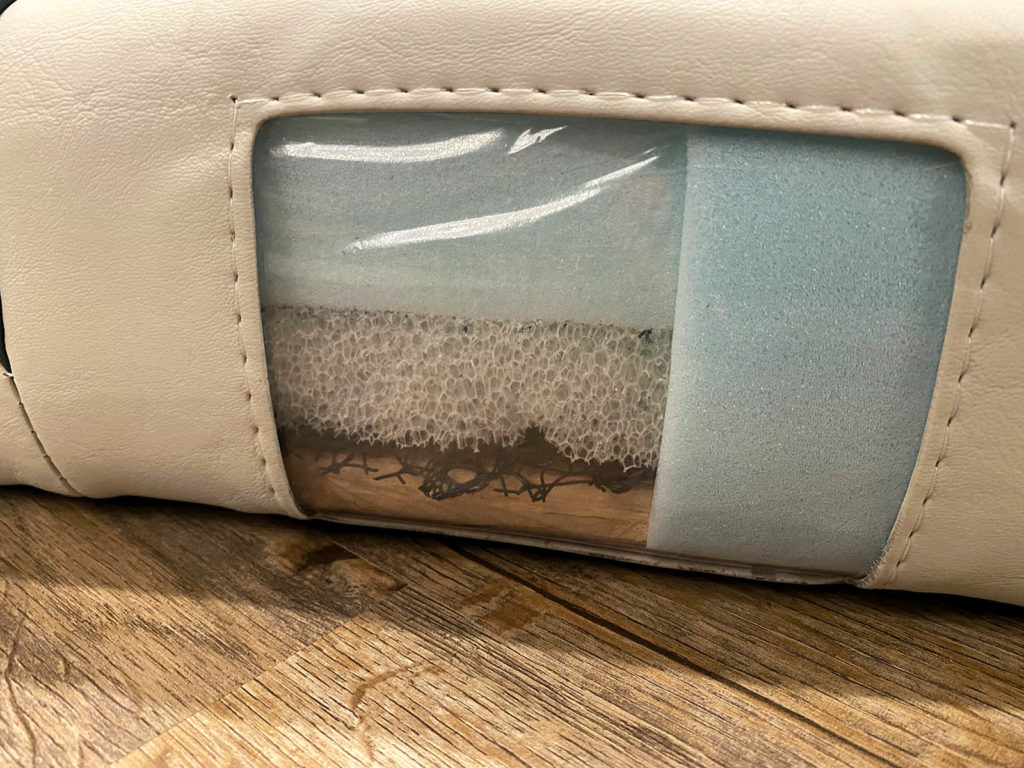
Dawn Novotny is the owner of Interiors by Dawn in the Lake George, N.Y. region. She has been in the business for 11 years. The driving question behind every project and customer experience for her shop is “How can we make this better?” with the goal of crafting quality marine upholstery and relationships designed to last. interiorsbydawn.net.
SIDEBAR: Encourage Preventative maintenance
Always provide customers with care and maintenance guides to help them reduce mold and mildew growth and maintain the life of their investment.
Emphasize the importance of keeping their upholstery clean and wiping the seats down after every use. A mild detergent will remove any organic matter, dirt or debris, which can be used as a food source for microorganisms. Follow the manufacturer’s cleaning recommendations if any mold or mildew is observed.
When they’re not in use, boats should be covered with a quality boat cover that includes proper venting and does not make direct contact with any seats (or has a layer between).
Obviously, you can’t make customers cover their boat at the end of the day or clean and maintain it, but you can provide the seat construction, tools and knowledge to protect and prolong the life of their investment.
 TEXTILES.ORG
TEXTILES.ORG 






